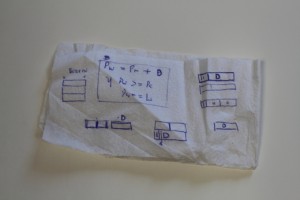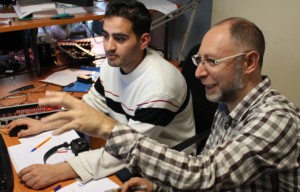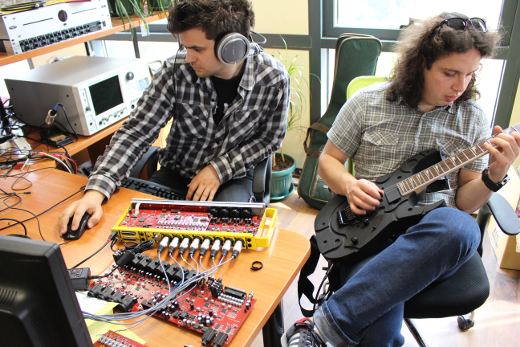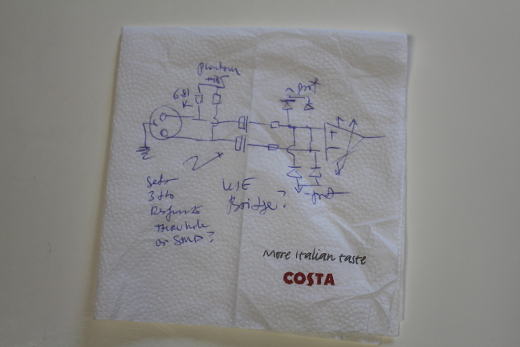Research & Development: Antelope Audio Zen Studio — Portable Audio Interface
Zen – it’s a school of Mahayana Buddhism; a meditative state; an audio interface.
If that last category seems out of place, you may not know the thinking that went into making Zen Studio, the portable audio interface from Antelope Audio. But this unit was designed to satisfy and soothe every stress test that comes with recording – in the studio or on the move.
Upon its introduction at MusikMesse, Zen was a surprise coming from a company that built its reputation on master clocks like the prized Isochrone 10M AKA The Atomic Clock, converters like the Eclipse 384 Stereo AD/DA, and Orion32 multi-channel AD/DA converter and USB interface .
With Zen Studio, Antelope has debuted something different: the first professional portable solution that provides 12 mic pres, 20 analog ins and 14 outs, DSP effects. 24 channel low-latency PC and Mac connectivity is also part of this powerful package. In all, 38 simultaneous inputs and 32 total outputs are available, along with the same clocking and conversion from the 32-channel Orion interface.
For artists, engineers, and music producers, the interface remains one of the primary considerations for creating a recording setup. What’s the thinking that goes into a next-generation entry for this crowded sector? In our latest “Research & Development,” Antelope Audio CEO & Founder Igor Levin reflects on the Zen of Audio Interface Design.

You CAN take it with you: Connectivity, clocking, and conversion are all hallmarks of Antelope Audio’s portable Zen Studio.
Until now, Antelope Audio has primarily been known in the Pro Audio market for its high-end converters and master clocks. What made this the right time for Antelope to branch out into a portable audio interface?
First, I would like to make it clear that we do not completely differentiate our high-end converters from the portable audio interfaces we design, since both products share the same core technologies and high-quality components. ZEN Studio perfectly illustrates that high-end sound and extreme portability are not contradictory.
The question has been asked “why now?”: With our last product, Orion32, we proved that we can fit 32 channels of great sounding AD/DA and an Antelope master clock in a 1U chassis. We knew we could do the same with 12 mic pres, and put it in an even smaller box.
From there, what was the hole in the audio interface market that you felt you could address with a new offering?
We noticed that there are a large number of portable USB audio interfaces on the market, but they either offer a low-channel count or a pretty fair sound quality. Most of them might be OK for some basic home recording purposes, but not offering much of the flexibility and functionality one needs when going deeper into creating music.
Zen Studio fits in the market where people are looking for a portable multi-channel recording solution with proven studio quality clocking, conversion and processing.
I know that portability was a high priority for you in designing Zen studio. Have you seen additional demand from engineers and artists for a portable interface?
Today, producers and artists are constantly traveling and often working on the go. They need an interface that allows them to be creative not only in the studio, but also in a hotel room.
At the same time, others need to maintain sound quality while moving from one location to another. An indie band may want to record with the same high quality that an expensive studio may offer, or have access to a high quality monitoring and recording system for their live gig. Younger audio professionals may require an easy to use device so they can learn the basics of recording and mixing. Independent filmmakers, meanwhile, are looking for high quality in an easy to carry recording device.
Zen Studio fits all these needs and situations. It offers almost unlimited options and possible applications and is designed to be the ultimate solution for a garage band, an established producer or an experienced field-recording engineer.
Zen Studio gets a great deal of connectivity into its form factor. How did you decide what was the ideal amount of inputs, outputs, and mic pres for the unit?
It is hard to tell what the ideal amount of connectivity is, and I’m sure we will get plenty of comments and interest in the choices we made. But we did our best to suit the needs of the market we are trying to attract.
We carefully researched what is already out there, talked to many end users and analyzed what would make the best fit for our product line. This is how we came up with our choice of including 12 class A mic pres with phantom power, eight line inputs, and four Hi-Z inputs. On top of that, we added eight more line inputs on D-sub 25, creating a portable device that has no less than 20 real analog inputs.
Which existing pieces of Antelope technology were you able to most benefit from and incorporate directly into Zen Studio?
The core of Zen Studio, as with all Antelope Audio products, is our proprietary clocking technology. It is run by the 4th generation of our 64-bit Acoustically Focused Clocking jitter management algorithm and oven-controlled crystal oscillator: exactly the same technology that sits in our flagship master clock Trinity.
Other proven technologies are borrowed from our 32-channel interface Orion32. Zen Studio takes advantage of the Orion’s conversion technology and extremely low latency — yet very stable — custom USB interface.
We didn’t compromise on the headphone amps — these come from our mastering converter Eclipse 384.
On the flipside of the coin, what are some examples of new technologies that you had to design from the ground up for this solution?
Zen Studio is a portable recording solution designed to provide commercial studio-grade functionality. This the reason we took the flexible signal routing concept from Orion32 and further developed it to meet the more complex needs of Zen Studio.
In addition, we implemented four independent mixers with built-in DSP effects. Perhaps it is not quite fair to say that the mic pres and the DSP effects are designed from scratch, since one of the earliest devices I designed 15 years ago was the Aardvark Direct Pro 24/96 and Q10, which had mic pres and a DSP engine with EQ, Compressor and Reverb. This was well accepted in the market back then, and in fact is still in use within some studios.
As the Antelope team got deeper into the design process, what were some of the surprises that arose as they went along?
We were surprised to see that there was such a strong interest for a yellow color option on the box, but we stuck to the red one!
On a more serious note though, based on the preliminary research and our existing know-how, we immaculately plan every stage of our product development. So in fact, there were no major surprises or issues throughout the entire process. I’m working with a team of young, yet very experienced engineers, whose creativity and ambition play a critical role in the R&D process.
How is the evolution of DSP important to the design of a solution like Zen Studio? Tell us how you were able to use the latest improvements in DSP to maximize the capabilities of Zen studio.
The DSP engine that we built for Zen Studio is based on a custom FPGA (field-programmable gate array) with massive parallel processing capabilities. Unlike conventional chips that are typically equipped to handle certain tasks in certain ways, the one we use can be programmed, enabling it to achieve a more flexible architecture.
The conventional chip looks like a maze that has only one way to go from point A to point B, while our FPGA allows us to move the walls and create paths according to the needs of the user. Through the FPGA we create an individual solution and configuration for each effect we want to apply.
This results in a DSP chip which is eight times more powerful compared to those in similar devices, bringing fast and easy simultaneous processing of multiple effects, better sound quality and much lower latency.
What are some unique aspects of the routing and mixing capabilities of Zen studio? How did the team conceptualize and agree on what kind of capabilities should be included?
The Zen Studio was developed from the perspective of the user and based on the demand to simplify workflow. It is fully controllable via desktop application on both Mac and PC: the user interface shows all the input and output channels in different colors.
By a simple drag ‘n’ drop action, the user can route every input signal to any output, or route one input to several outputs. We initially developed this concept for Orion32, and it has proven to be very user friendly. With Zen we went even further, applying it to four different mixers that can be sent out for monitoring while recording one of them through the USB.
Finally, what’s The Big Lesson you learned from creating Zen Studio? How is that going to help you and your team with the next piece of gear you design?
Just like Zen philosophy, as we know it today, is the result of a long history, with many changes and contingent factors, Zen Studio is the result of years of development and enhancement of various technologies.
What we have learned is that we should not neglect the past, but get the best out of it and apply it in the development of the new products.
— David Weiss
Please note: When you buy products through links on this page, we may earn an affiliate commission.










